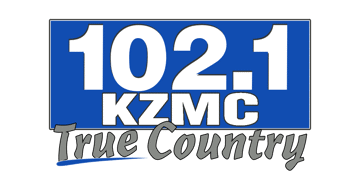August’s Mid-America Manufacturing Index Slumps

August 2024 Survey Highlights:
-For the fourth time this year, the overall, or Business Conditions Index, sank below growth neutral.
-The wholesale price gauge fell for the sixth straight month, indicating cooling inflationary pressures.
-The region’s employment index slumped below growth neutral for an eighth straight month.
-U.S. Bureau of Labor Statistics data show that regional manufacturing employment fell by 4,500, or 0.3%, over the past 12 months.
-Despite falling employment, almost 18% of supply managers reported shortages of workers. Supply managers remained pessimistic regarding the economic outlook—35.3% see recession as the greatest threat.
-As a result of a cooling 2024 economy and waning inflationary pressures, Goss expects at least two rate cuts by the Federal Reserve for the remainder of 2024.
OMAHA, Neb. (September 3, 2024) — For the fourth time in 2024, the Creighton University Mid-America Business Conditions Index, a leading economic indicator for the nine-state region stretching from Minnesota to Arkansas, slumped below the 50.0 growth neutral threshold.
Overall Index: The Business Conditions Index, which uses the identical methodology as the national Institute for Supply Management (ISM) and ranges between 0 and 100 with 50.0 representing growth neutral, declined to 48.7 from 50.7 in July and represents the eighth time in 2024 that the index has hovered around growth neutral.
“The overall index, much like the U.S. reading, has vacillated around growth neutral since December of 2023. Additionally, supply managers remained pessimistic regarding the 2024 outlook with 35.3% of them seeing a recession as the greatest threat,” said Ernie Goss, PhD, director of Creighton University’s Economic Forecasting Group and the Jack A. MacAllister Chair in Regional Economics in the Heider College of Business.
The Mid-America report is produced independently of the national ISM.
Employment: After climbing to growth neutral for December, the employment gauge has tumbled below 50.0 for the past eight months. The August employment index plummeted to 45.2 from 49.7 in July. Despite falling manufacturing employment, almost 18% of supply managers reported a shortage of workers in the August survey.
U.S. Bureau of Labor Statistics data show that regional manufacturing employment fell by 0.3% over the past 12 months. The gaining states were: Nebraska (+4.0%), North Dakota (+1.1%), Oklahoma (+0.9%) and Kanas (+0.3%). The losing states were: Minnesota (-1.9%), South Dakota (-1.3%), Missouri (-0.9%) and Iowa (-0.7%).
Comments from supply managers in August:
“Business levels are holding steady. It seems everyone is waiting until after the election to make a significant move on projects.”
“Finding and keeping qualified applicants is a problem for us.”
“Business continues to be sluggish. The last four months have been slow.”
“We hope things pickup soon.”
“We are seeing an increasing slowdown in business and really no letup in inflation no matter what the Feds say is happening.”
Wholesale Prices: The August price gauge dropped to 56.2 from 59.9 in July, indicating cooling inflationary pressures. “This is the sixth straight month that the inflation gauge has fallen. The regional inflation yardstick has clearly declined into a range indicating inflationary pressures moving toward the Federal Reserve’s target. As a result, I expect the Fed to cut interest rates two times in the remaining months of 2024,” said Goss.
Confidence: Looking ahead six months, economic optimism, as captured by the August Business Confidence Index, slumped to 26.7 from July’s 30.6. “Regarding economic challenges, 35.3% see a recession as the greatest threat; 23.5% view higher prices as the biggest challenge; 17.7% expect trade restrictions and tariffs as the chief hazard; and the remaining 23.5% named other factors,” says Goss.
Inventories: The regional inventory index, reflecting levels of raw materials and supplies, dropped to 45.5 from July’s 50.8. Said Goss, “As a result of falling sales expectations, supply managers reduced their supplies of raw materials and other inputs.”
Trade: The strong dollar continues to make U.S. goods less competitively priced abroad and pushed the export index down to 50.0 in August from 51.5 in July. A weakening regional economy pushed the import reading down to 45.1 from 47.6 in July.
“According to the latest U.S. International Trade Administration data, the region’s manufacturing sector expanded 2024 year-to-date exports to $49.6 billion from $47.7 billion for the same period in 2023 for a 4.2% gain,” said Goss.
Other survey components of the August Business Conditions Index were: new orders dipped to 50.9 from 51.1 in July; the production or sales index fell to 47.2 from 49.3 in July; and the speed of deliveries of raw materials and supplies rose to 55.0 from July’s 52.7. This higher reading indicates an expansion in supply chain disruptions and delivery bottlenecks for the month.
The Creighton Economic Forecasting Group has conducted the monthly survey of supply managers in nine states since 1994 to produce leading economic indicators of the Mid-America economy. States included in the survey are Arkansas, Iowa, Kansas, Minnesota, Missouri, Nebraska, North Dakota, Oklahoma and South Dakota.
Below are the state reports:
Arkansas: The state’s Business Conditions Index slumped to 44.8 from 54.1 in July. Components from the August survey of supply managers were: new orders at 42.9; production or sales at 48.7; delivery lead time at 50.5; inventories at 39.8; and employment at 42.3. According to the latest U.S. International Trade Administration data, Arkansas’ manufacturing sector expanded 2024 year-to-date exports to $3.0 billion from $2.7 billion for the same period in 2023 for a 11.2% gain.
Iowa: The state’s Business Conditions Index for August sank to 44.5 from 47.5 in July. Components of the overall August index were: new orders at 42.2; production or sales at 48.4; delivery lead time at 49.3; employment at 35.1; and inventories at 47.7. According to the latest U.S. International Trade Administration data, exports for Iowa’s manufacturing sector 2024 year-to-date fell to $8.1 billion from $8.6 billion for the same period in 2023 for a 5.9% reduction.
Kansas: The Kansas Business Conditions Index for August dropped to 46.5 from 48.0 in July. Components of the leading economic indicators from the monthly survey of supply managers for August were: new orders at 49.1; production or sales at 44.2; delivery lead time at 52.5; employment at 54.6; and inventories at 32.3. According to the latest U.S. International Trade Administration data, Kansas’ manufacturing sector expanded 2024 year-to-date exports to $6.3 billion from $6.0 billion for the same period in 2023 for a 5.7% gain.
Minnesota: The August Business Conditions Index for Minnesota fell to 44.9 from 46.4 in July. Components of the overall August index were: new orders at 47.7; production or sales at 40.2; delivery lead time at 46.1; inventories at 42.4; and employment at 47.8. According to the latest U.S. International Trade Administration data, Minnesota’s manufacturing sector expanded 2024 year-to-date exports to $12.9 billion from $11.6 billion for the same period in 2023 for an 11.5% gain.
Missouri: The state’s August Business Conditions Index dropped to 45.5 from 56.1 in July. Components of the overall index from the survey of supply managers for August were: new orders at 48.3; production or sales at 41.8; delivery lead time at 48.7; inventories at 57.2; and employment at 31.5. According to the latest U.S. International Trade Administration data, Missouri’s manufacturing sector expanded 2024 year-to-date exports to $8.9 billion from $7.7 billion for the same period in 2023 for a 15.2% gain.
Nebraska: For the fourth time in the past five months, Nebraska’s overall index rose above growth neutral. The state’s August Business Conditions Index climbed to 56.4 from July’s 53.3. Components of the index from the monthly survey of supply managers for August were: new orders at 50.8; production or sales at 49.4; delivery lead time at 61.0; inventories at 70.5; and employment at 50.3. According to the latest U.S. International Trade Administration data, Nebraska’s manufacturing sector expanded 2024 year-to-date exports to $3.7 billion from $3.5 billion for the same period in 2023 for a 6.6% gain.
North Dakota: After five straight months of below growth neutral readings, the state’s overall index advanced above growth neutral. The state’s overall, or Business Conditions Index, increased to 50.7 from 49.8 in July. Components of the overall index for August were: new orders at 49.3; production or sales at 44.8; delivery lead time at 53.6; employment at 60.9; and inventories at 44.9. According to the latest U.S. International Trade Administration data, North Dakota 2024 year-to-date exports sank to $2.4 billion from $3.6 billion for the same period in 2023 for a 33.4% reduction.
Oklahoma: The state’s Business Conditions Index sank to 48.0 from 49.3 in July. Components of the overall August index were: new orders at 49.2; production or sales at 44.5; delivery lead time at 53.1; inventories at 34.8; and employment at 58.1. According to the latest U.S. International Trade Administration data, Oklahoma’s manufacturing sector expanded 2024 year-to-date exports to $3.9 billion from $2.9 billion for the same period in 2023 for a 16.9% gain.
South Dakota: The August Business Conditions Index for South Dakota declined to 44.5 from July’s 46.7. Components of the overall August index were: new orders at 41.2; production or sales at 48.1; delivery lead time at 47.6; inventories at 46.7; and employment at 38.7. According to the latest U.S. International Trade Administration data, exports for South Dakota’s manufacturing sector 2024 year-to-date fell to $1.0 billion from $1.2 billion for the same period in 2023 for a 12.3% reduction.
Survey results for the month of September will be released on October 1, 2024, the first business day of the month.
